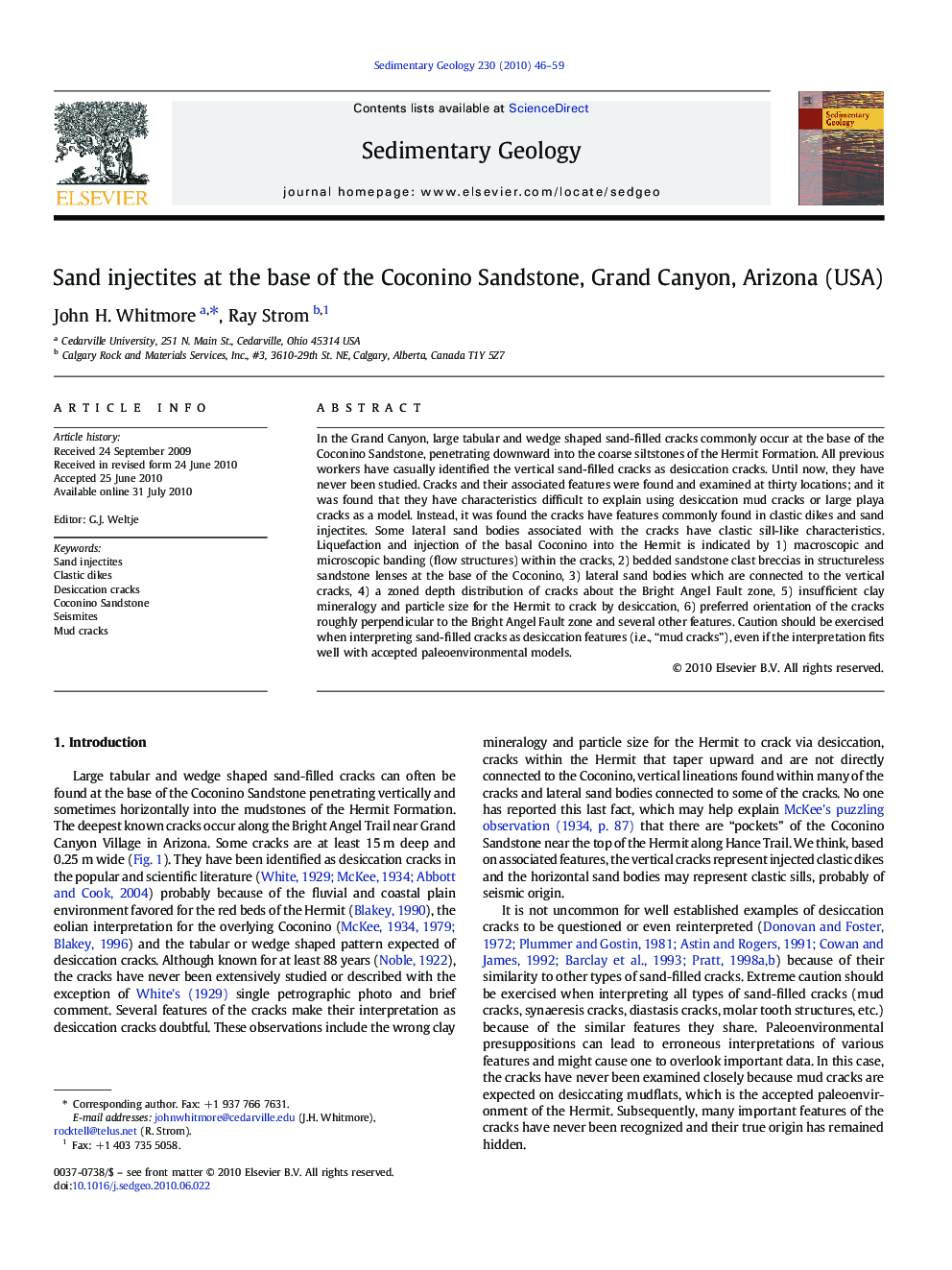| Article ID | Journal | Published Year | Pages | File Type |
|---|---|---|---|---|
| 4690144 | Sedimentary Geology | 2010 | 14 Pages |
In the Grand Canyon, large tabular and wedge shaped sand-filled cracks commonly occur at the base of the Coconino Sandstone, penetrating downward into the coarse siltstones of the Hermit Formation. All previous workers have casually identified the vertical sand-filled cracks as desiccation cracks. Until now, they have never been studied. Cracks and their associated features were found and examined at thirty locations; and it was found that they have characteristics difficult to explain using desiccation mud cracks or large playa cracks as a model. Instead, it was found the cracks have features commonly found in clastic dikes and sand injectites. Some lateral sand bodies associated with the cracks have clastic sill-like characteristics. Liquefaction and injection of the basal Coconino into the Hermit is indicated by 1) macroscopic and microscopic banding (flow structures) within the cracks, 2) bedded sandstone clast breccias in structureless sandstone lenses at the base of the Coconino, 3) lateral sand bodies which are connected to the vertical cracks, 4) a zoned depth distribution of cracks about the Bright Angel Fault zone, 5) insufficient clay mineralogy and particle size for the Hermit to crack by desiccation, 6) preferred orientation of the cracks roughly perpendicular to the Bright Angel Fault zone and several other features. Caution should be exercised when interpreting sand-filled cracks as desiccation features (i.e., “mud cracks”), even if the interpretation fits well with accepted paleoenvironmental models.
